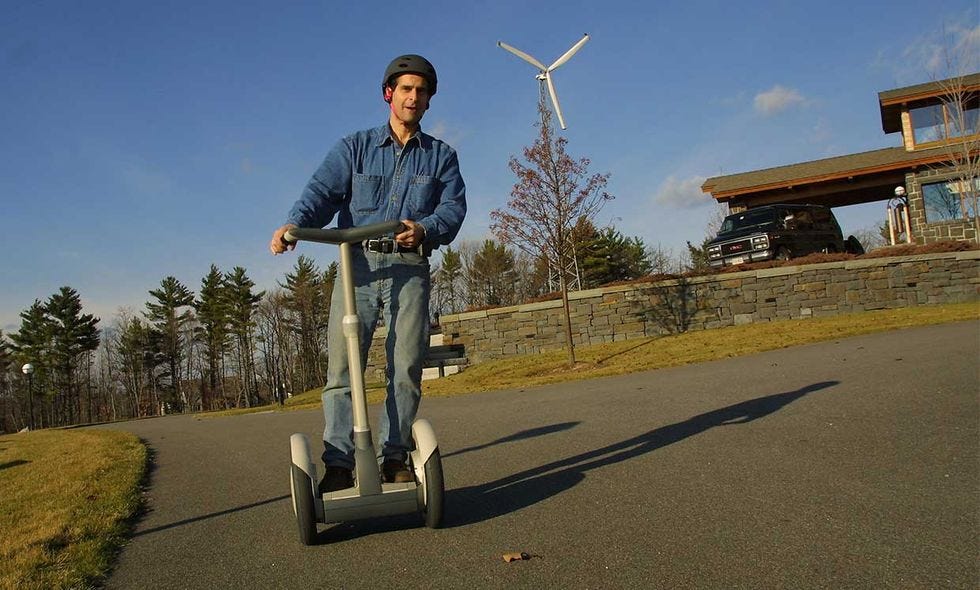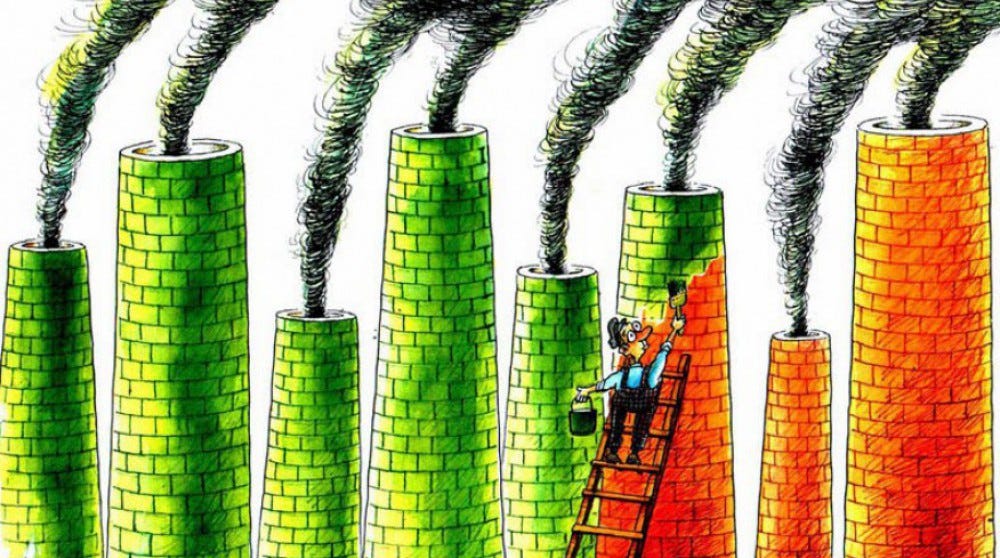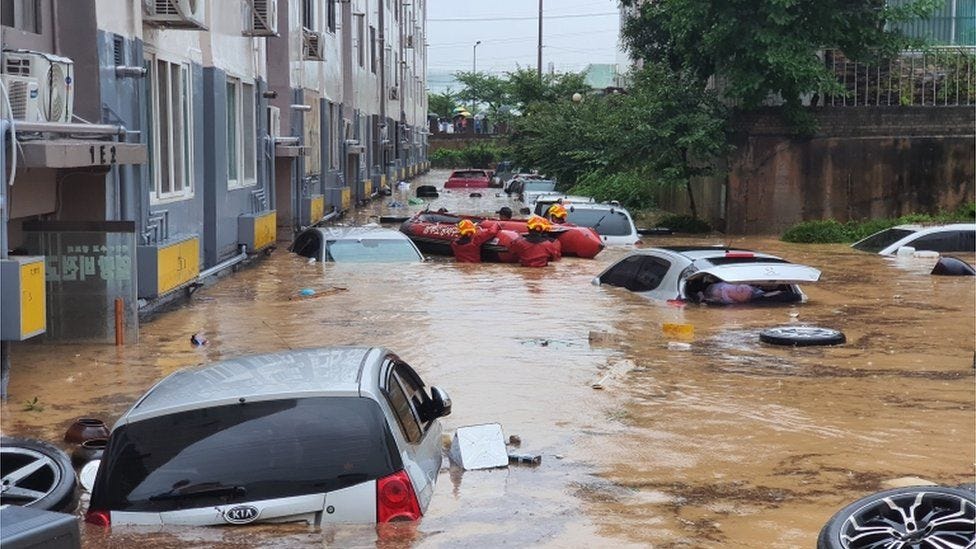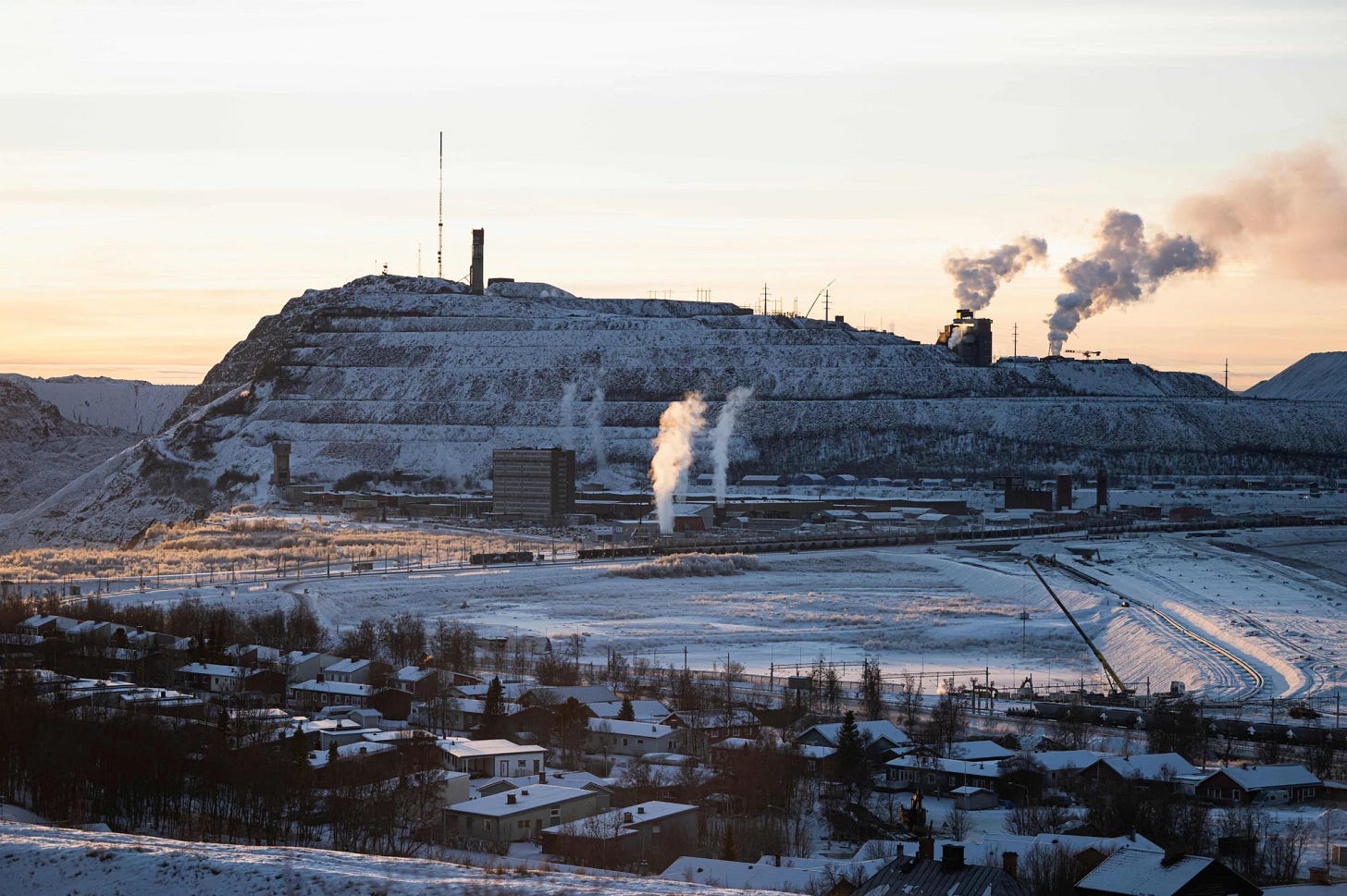...but what was it really worth?
Value is an elusive prospect, and we won't nail it down this week.

In this week’s edition of “This Was a Real Job,” we’re not sure if any of this is worth it, but keep on striving to generate value nonetheless.
I remain AJ Freeman, and “This Was a Real Job.”
This Week in Work: Cold Hard Cache
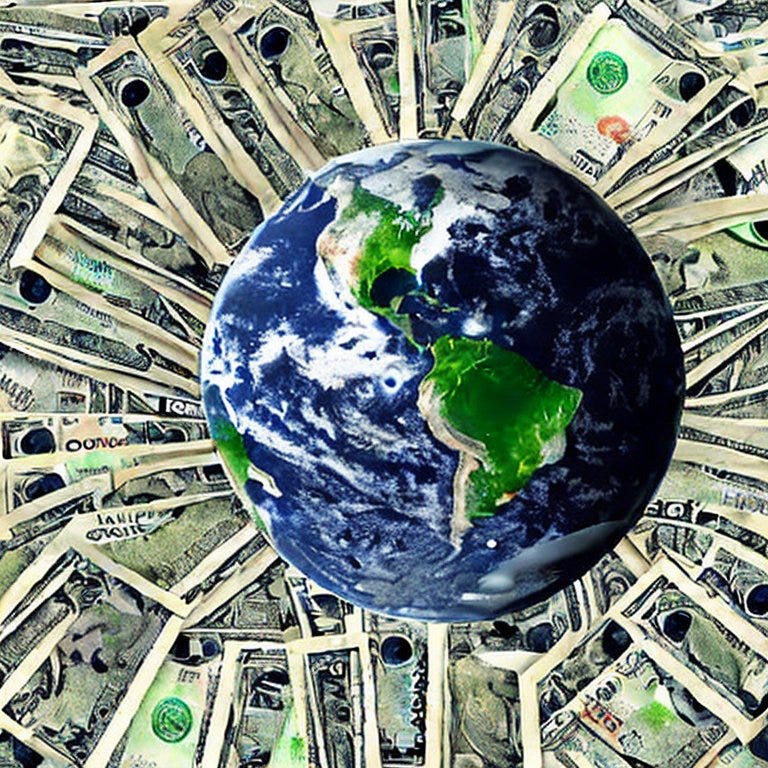
Last week I encountered a piece on Professor Richard Dawkins’ Substack pondering currency as “a virtual refrigerator,” essentially a method of preserving the value of material resources past their natural shelf life.
It’s an interesting piece that makes some valid contentions through an ancestral perspective…for example, when a band of hunter-gatherers took down the occasional wooly mammoth, the best way to extract full value from the kill was to diplomatically distribute the meat and materials instead of leaving it to the elements during an age where salt was a war prize and refrigeration a dream.
In this way, the value of a ton of mammoth carcass could be expanded from a few good meals for a small tribe to lifelong mutual defense treaties.

This is as direct a demonstration of value exchange as can be found in the ancient world.
A few generations later, in a time of labor upheaval across industries, worldwide supply shortages, and a general sense of uncertainty, it can be easy to lose sight of what value is.
We speak in impasssioned terms about the value of time, goods, talent, and information based on which of these we either hold or desire…but without an understanding of what value is, any such discussions are not only incomplete, but entirely unviable for the purposes of discovering any objective truth.
Of course, that leads right back into an examination of what exactly objective truth is and can be…it’s why some set of apes long ago decided to put inedible pieces of metal in between the production and consumption of essential goods, and these “stores of value” are widely considered equivalent to the material riches they are intended to govern.
In any event, this is an absurdity that leads directly back into an element of Professor Dawkins’ post, here presented as a direct quote:
“The graph of available good things is not a convenient flat line.”
Which seems diametrically opposed to the viability of a system predicated on consistently increasing rates of return, but that’s not what we’re here to discuss.
No, what put all these things in the same part of my brain today was stumbling across an advertisement for the debuting Nothing phone, released this summer by a UK firm by the same extraordinarily clever name.
The advertisement, clumsily disguised as a local news story, detailed the device’s “glyph interface,” a system of brightly flashing LEDs that light up in various patterns when you recieve a notification, because obviously you won’t be interested in it then.
It’s probably not THEE stupidest idea I’ve ever heard, we’re only about 2 weeks beyond some guy designing a papier-mache submarine perfectly color-matched to the sea to prevent any possible rescue….but it’s a decent regional contender.
Still, at a MSRP of about 600 USD, the Nothing Phone is apparently worth something to somebody…clearly our understanding of value remains, millenia after the first human being exchanged some inedible thingy they found for another thingy that they could eat, incredibly unclear.
If hard work is the most reliable indicator of success, then why aren’t the people who scraped all the phone’s innards out of the Earth by hand getting a bigger cut of this deal? Is marketing really among our civilization’s most valuable resources, the most beneficial service we as humans provide? Surely dragging the modern world out of the ground is harder than coming up with “Nothing.”
…but I guess if that were true, we’d have international spot prices for labor just as we have reliable universal prices around the globe for a unit of gold or oil.
Seems like some of our hardest workers are also some of our poorest people.
Instead, the value of the innovation required to (perhaps ineffectively) prevent a smartphone user from doomscrolling amounts to a couple hundred bucks in profit for each unit. Many societies around our world have to rely on much less costly means of minimizing typical screen times, such as lack of consistent power, limited free time, and occupational constraints.
There’s a lot of money in solving “first-world problems,” but is that value?
We discuss the concept of value fairly frequently in this space…earlier this month, a firm that convinced itself (and a round of investors holding nearly half a billion dollars) that the pizza of the future would be made and delivered by a robot rolling down city streets finally went bankrupt.
Anyone who has ever seen a pothole could have identified a potential issue there.
These tangled questions of value and practicality even extend as far back as the Segway. Anyone born in the late 80s to early 90s will remember IT being presented as a transformative development in human transportation and definitely not a mall-cop punchline.
Just one person in a wheelchair could have let anyone too high on hype know what kind of welcome anything with wheels can expect on the sidewalks of some of our more outdated cities.
So with all that being typed, it’s easy to understand how determining the value of anything is as much an art as a science. Take a bottle of water for example: at the corner store it’s a dollar or two, at a concert add a digit, and in the area of the Colorado River it could be worth a lot more than that a lot sooner than you think.
Our common concepts of value dictate that these are market issues foremost.
As a means of defining the need for a device that is far more likely to spawn a socially disruptive TikTok challenge than serve its intended purpose as a tool to minimize your everyday smartphone time, value is a nebulous concept at best.
As a method of determining the ongoing effects of an individual’s contribution to a given outcome, value has been woefully limited in its scope and application.
As a mode of organizing modern society, the results speak for themselves…our systems are not built on value exchange, they are built on value extraction.
Big difference.
Maybe Update Your Resume: Call Center?

We’ve all dealt with the first atttempt to unperson this line of work, the automated answering system that dispassionately informs you that your call is appreciated and to oprima nueve para español.
It had all the cordiality you would expect from a utility created entirely under the almighty auspices of customer service, just almost none of the helpfulness…it’s why many of us have found ourselves shouting profanities at an interactive voice messaging machine designed not to recognize shouting or profanity.
Well, those days may be over thanks to Silicon Valley startup Sanas. Thanks to its AI-powered “accent translation”, anyone from a formerly colonized English territory can sound just like the friendly Nebraskans that served customers across the US have somehow come to expect when they call a massive multinational company that is technically based in Ireland.

The marketing copy for the service promises that users can “break barriers one conversation at a time,” which is admittedly a good line but does leave the question of whether reducing the diversity of spoken accents in everyday life would eliminate cultural biases or strengthen them uncomfortably open.
In any event, “accent translation,” in endeavoring to make our world smaller, may do just that. After all, with these voice modification services in place, it’s only a matter of time until enough answers to these standardized customer service questions are compiled to enable AI to answer them “all on its own.”
For now, the first step to a future of costless labor in the call center industry involves moving operations to where people can be purchased more cheaply, and thanks to the innovators at Sanas, you’ll never notice the difference.
…unless, of course, you had a job in a domestic call center.
Color Commentary: Greenwashing
The concept of value is, for some impossible to comprehend reason, also frequently relevant to the challenge of preserving our irreplaceable biosphere.
How could a price tag possibly be placed on the sole scientifcally proven miracle?

However, as we all know, that won’t stop our species from giving it a shot…for better and worse, “giving it a shot” is the defining trait of the human animal.
As it concerns the approximate retail price of a habitable homeworld, the “carbon offset” has become a popular form of lip service in a time where money is speech.
We’re obviously not going to do anything drastic like actually cut back on emissions—remember way back in 2020 when rivers ran clear and animal populations began to appear in their historic locations because the Industrial Revolution gave it a rest for like a month wait we don’t talk about that—so I suppose selling indulgences to the worst sinners is the next most human thing.
We’ve all heard it in those corporate commercials with the soft ukelele riffs: these credits are intended to fight climate change by contributing to sustainable low-impact geothermal reforestation efforts in the blah blah blah.
Except, of course, they don’t.
I mean, I acknowledge that that link is from April, but let’s be real here: that story has been dropping consistently for years now….hell, it’s the second straight “hottest week in history” in much of the Northern Hemisphere, and if we roll over into a third you can expect to hear the fake carbon credits story again.
It’s a storyline that really doesn’t get enough credit for its obscenity.
Of course, the actual solutions seem as obvious as what’s preventing their implementation: worldwide investment in locally-based efforts driven by those with the most direct material stake in their maintenance…and we’re not talking about corporations and governments here.
After all, who has more to lose from the permanent destruction of a human habitat, its investors or its inhabitants?
I guess that depends on your concept of value.
What’s clear to me here is that the cost of appearing to care about the environment is actually far too low at this time. A more effective form of pricing out the planet might lie in enhanced taxation of luxury services…and if you take a poll of the planet’s people, some of us might be surprised at what lands on the luxury list.
Like, if you ask me, we’ve gotten far too comfortable with the idea of unlimited magic sky tubes readily available to whisk us off to the other side of the world at a moment’s notice for whatever reason imaginable. Sure, a flight might cost as little as $79 or whatever out of pocket today, but that’s before you count the actual costs of burning fuel and a squall of microplastics to the biosphere.
One day that’s going to get factored into the price of a ticket and a family flight to some themed strip mall in the Florida swamp will set you back like $350,000.
You really will not believe it if you were born after 2001, but flying used to be even easier than it is now. Just show up at the terminal and run right up to the gate 5 minutes before takeoff. Now, it’s not that easy…in the wrong circumstances, things can change overwhelmingly and overnight.
Realistically, that’s not today and likely won’t be tomorrow either. Probably won’t even happen this week. You can still plan your ski trip in Dubai if you must.
Still, the casual misanthropy contained within the long-running greenwashing saga serves to highlight the inherent issues with viewing all things in our Earthly existence as having market-based characteristics…we ain’t gonna quietly account our way out of this one.
*the “Color Commentary” segment leaked out from one of my other projects, “64 to Infinity: Love Letters in Crayon”!
if you’re a lover of color interested in a chronochomatic history of humankind as expressed through a familiar childhood palette, head on over and subscribe.
like this publication, it is entirely apolitical, unlike it “64 to Infinity” is SFW.

Hope Spot: The Sun Shines on Sweden
It’s unrealistic to think of any place on this planet as a utopia. After all, living out your life in any region of the world as a member of the working class empowers you to consistently choose from the best of less-than preferable options.
Like, does any of us actually want to spend most of our waking hours at work today?

…but that’s not what the weekly wrap-up is about. This segment takes a focus on sources of hope in our uncertain future, and it’s remarkably easy to look at Sweden and see hope on most weeks.
With widespread access to functioning public services, some of the world’s finest healthcare, a rehabiliatative attitude toward its legal system, and most importantly, a social attitude that contributing to a well-organized society is a point of civic pride, Sweden is often examined for glimpses of the future.
It’s a shame they’re not offering some kind of digital nomad visa.
However, thanks to an especially fortuitous development in recent days, those glimpses of the future just got a lot clearer: Europe’s largest deposit of the rare-Earth metals used in the manufacture of electric batteries, wind turbines, and other essential equipment in the transition to renewable energy was discovered deep in a mineshaft under Kiruna, the Nordic nation’s nothernmost city.
According to an NPR report, what has been unearthed by the state-owned mining company will enable domestic production of these materials and the technologies they help make possible for decades to come.
Although the deposit will take until approximately 2030 to reach using current drilling methods, the electrifying discovery may decrease reliance on trading partners currently percieved as problematic, such as China and Russia.
Naturally, we can never have truly nice things in these Interesting Times, and so it is worth mentioning that extraction will surely disrupt the nearby Arctic wildlife as well as disturbing ancestral lands.
In an important counterpoint to this good news everyone, Swedish indigenous environmental advocate Mats Blind-Berg points out that attempting to circumvent national oversight of these matters may be a catalyst behind the timing of this announcement…after all, the existence of the rare-Earth metal deposit in this general location has been rumored for years.
It’ll certainly be an uphill climb to protect the sanctity of the environment in 10 years, when global governments will likely have to choose between keeping fossil fuels or the winter season. Still, the fact that such preservationary structures even exist within the Swedish government in any meaningful way is in and of itself a source of continued hope, at least from where I’m sitting.
Hope can be a tricky thing.





